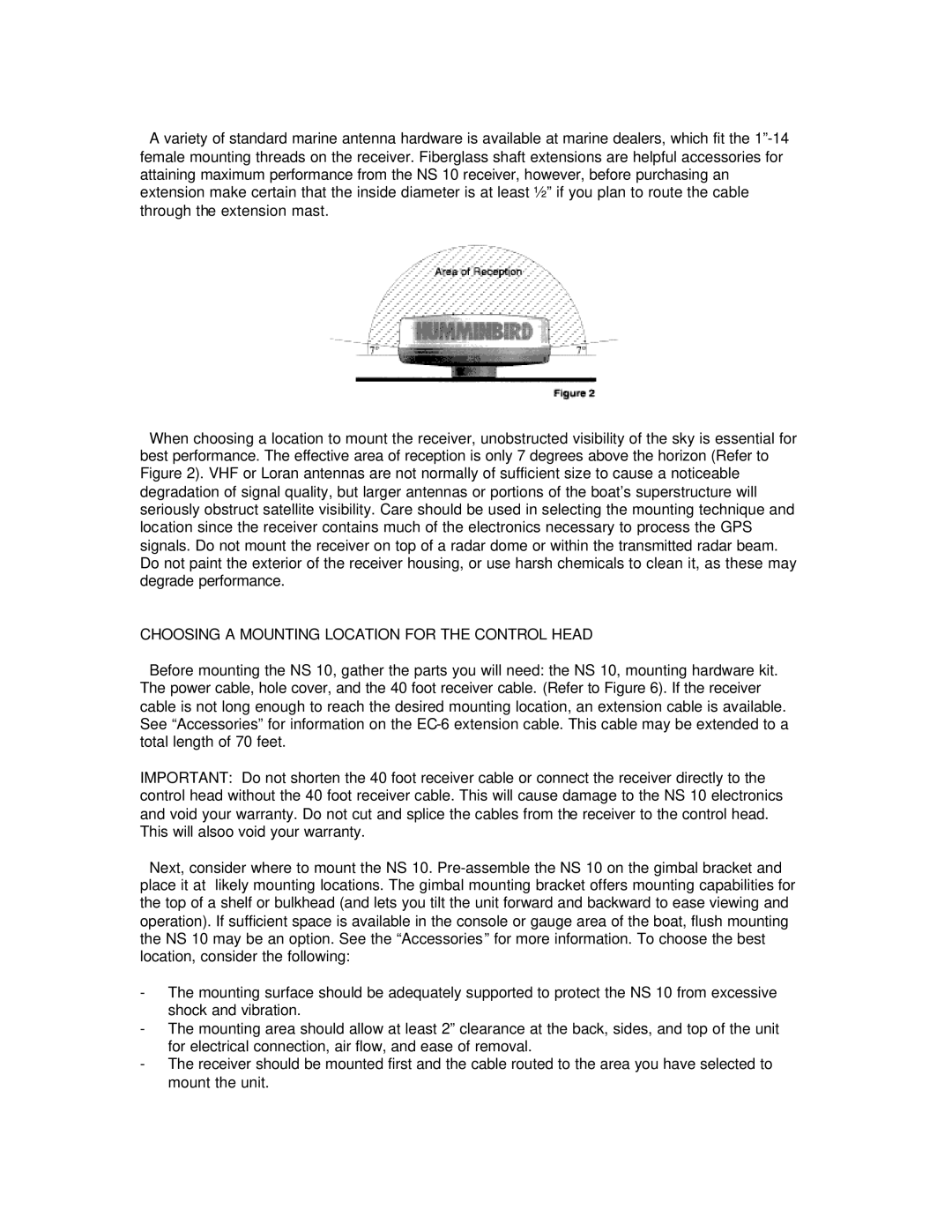
A variety of standard marine antenna hardware is available at marine dealers, which fit the
When choosing a location to mount the receiver, unobstructed visibility of the sky is essential for best performance. The effective area of reception is only 7 degrees above the horizon (Refer to Figure 2). VHF or Loran antennas are not normally of sufficient size to cause a noticeable degradation of signal quality, but larger antennas or portions of the boat’s superstructure will seriously obstruct satellite visibility. Care should be used in selecting the mounting technique and location since the receiver contains much of the electronics necessary to process the GPS signals. Do not mount the receiver on top of a radar dome or within the transmitted radar beam. Do not paint the exterior of the receiver housing, or use harsh chemicals to clean it, as these may degrade performance.
CHOOSING A MOUNTING LOCATION FOR THE CONTROL HEAD
Before mounting the NS 10, gather the parts you will need: the NS 10, mounting hardware kit. The power cable, hole cover, and the 40 foot receiver cable. (Refer to Figure 6). If the receiver cable is not long enough to reach the desired mounting location, an extension cable is available. See “Accessories” for information on the
IMPORTANT: Do not shorten the 40 foot receiver cable or connect the receiver directly to the control head without the 40 foot receiver cable. This will cause damage to the NS 10 electronics and void your warranty. Do not cut and splice the cables from the receiver to the control head. This will alsoo void your warranty.
Next, consider where to mount the NS 10.
-The mounting surface should be adequately supported to protect the NS 10 from excessive shock and vibration.
-The mounting area should allow at least 2” clearance at the back, sides, and top of the unit for electrical connection, air flow, and ease of removal.
-The receiver should be mounted first and the cable routed to the area you have selected to mount the unit.
